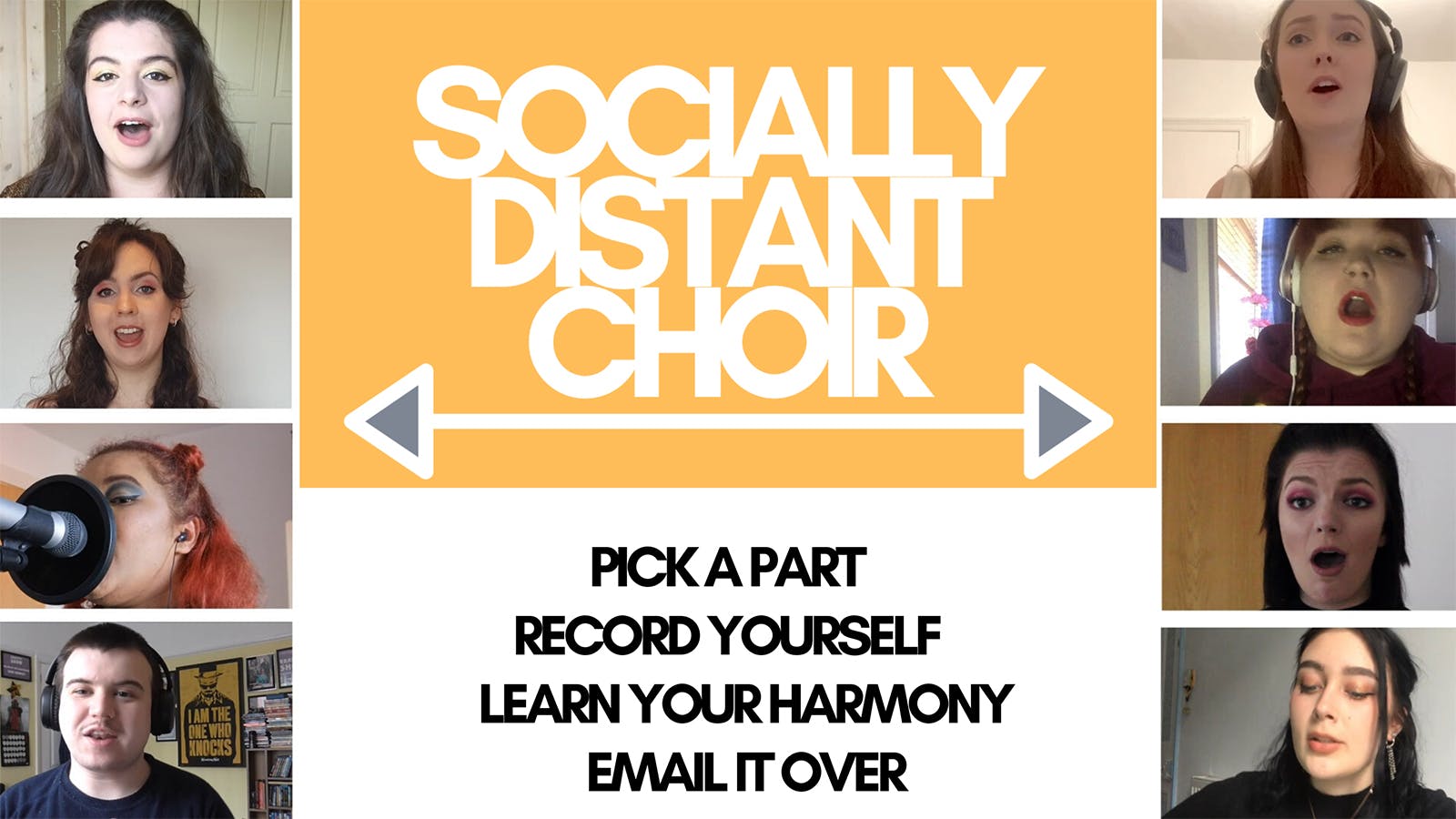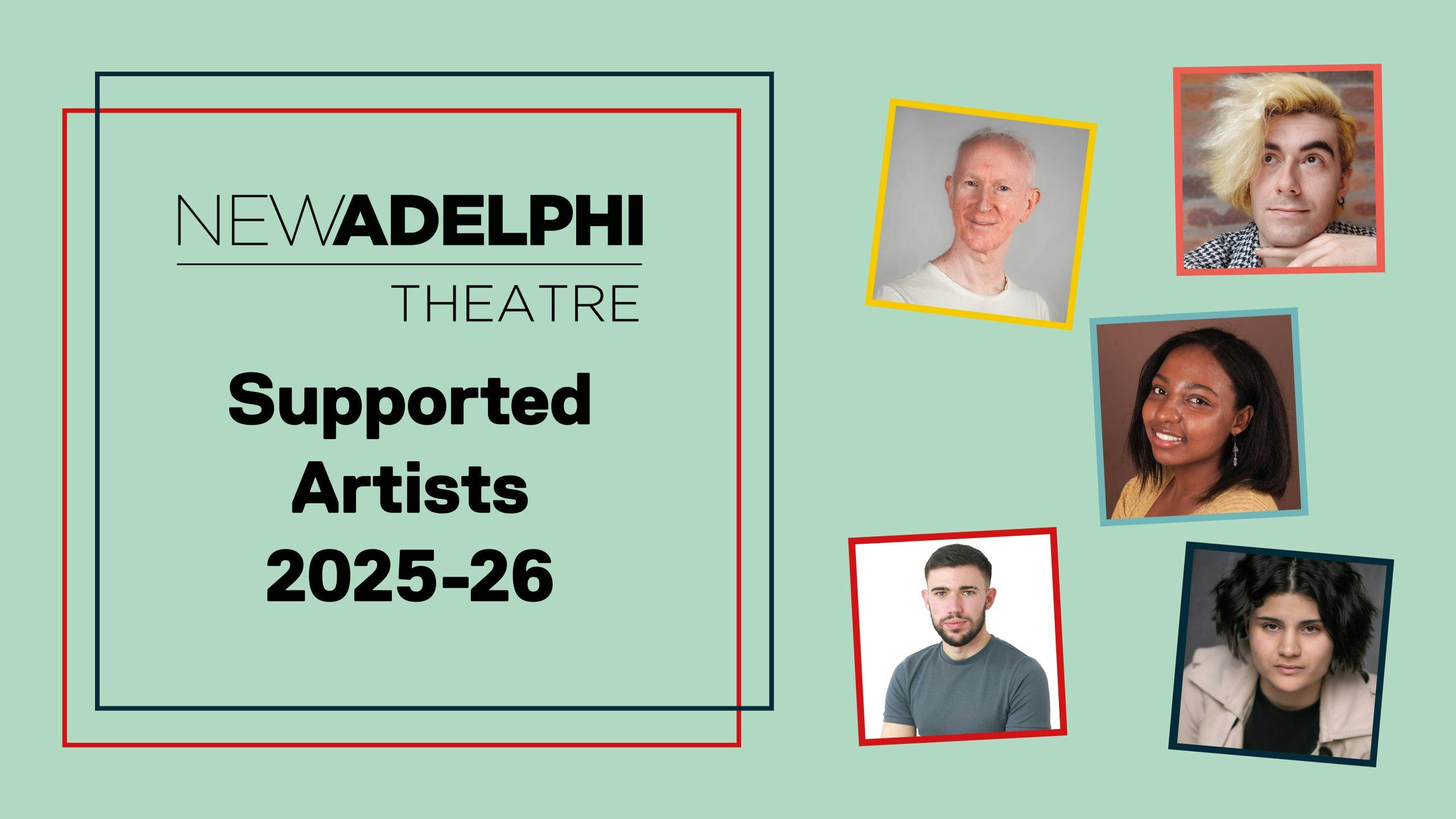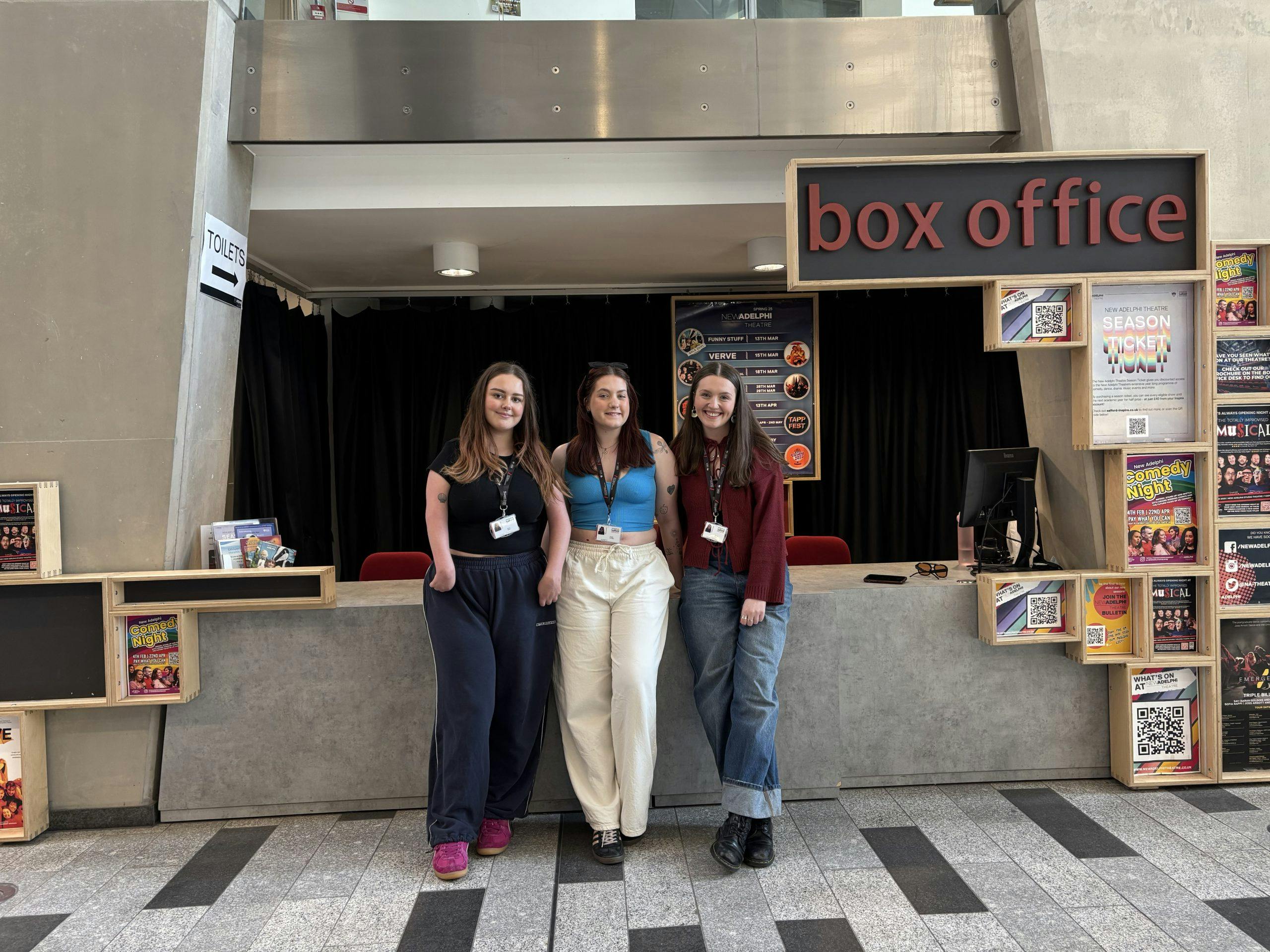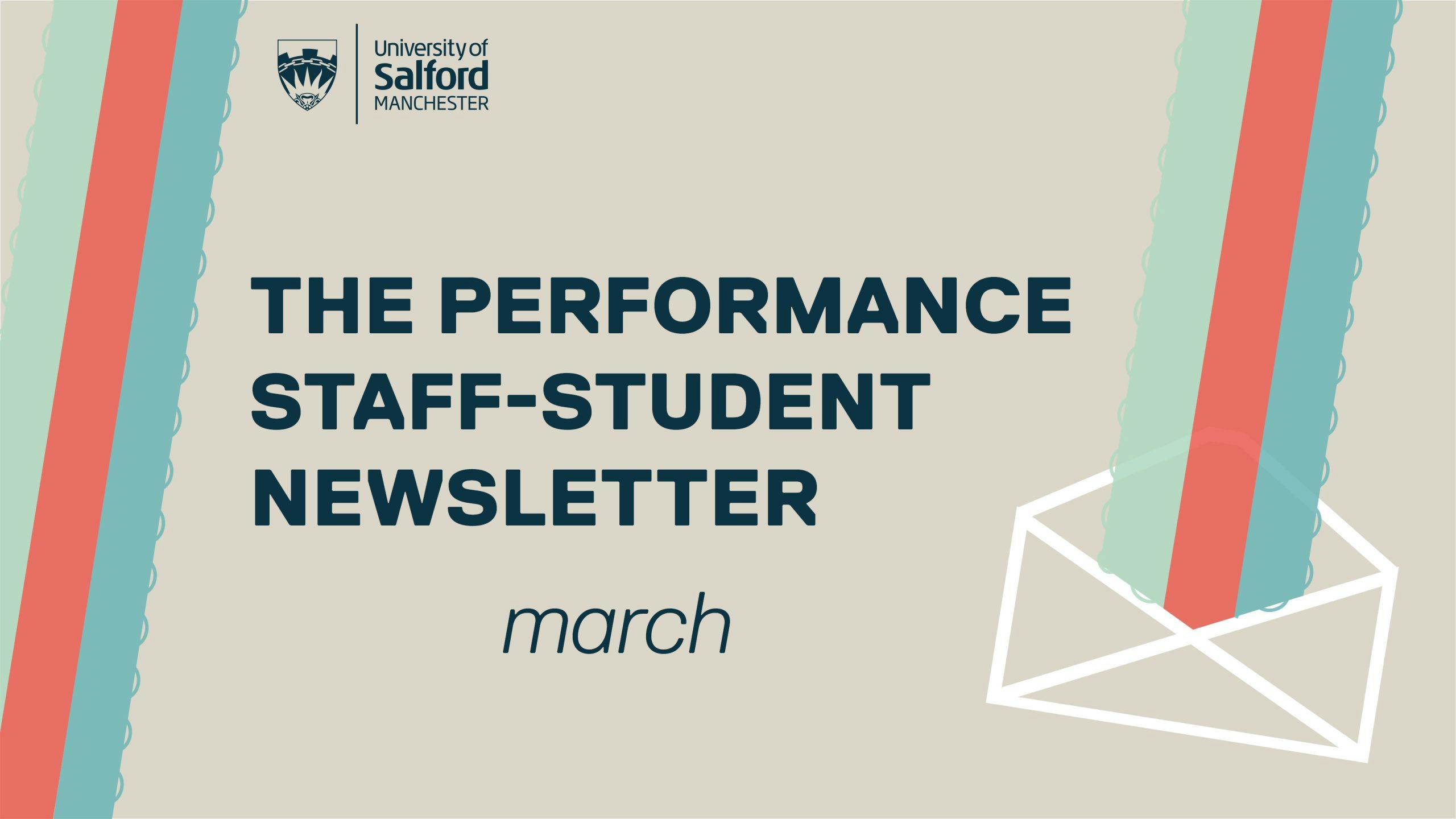
Over the lockdown, many of our students and alumni have found whole new ways of creating, sharing and experiencing art and performance with others. Whether it’s been online performances, website galleries or writing groups, the University of Salford community have gone above and beyond to devise and share during these difficult times.
An incredible highlight from these projects is the Virtual Choir, ran by Clare Bennett. Starting in April, Clare, an alumnus from BA Media and Performance, decided to use her previous experience as Musical Director of the Almost Famous Theatre Company to create something special.
Each week the Virtual Choir choose a song to perform and are given harmonies and choreography to learn separately. They then get dressed up in an according costume and film themselves performing their section of the song. Clare then edits these all together and suddenly, rather than singing alone in your bedroom, you’ve become part of a socially distant choir!
Our colleague Georgia Lynch (who is also part of the Virtual Choir!) asked Clare a few questions on her inspiration for the choir and how the magic happens.

Why did you start the Socially Distant Choir?
After being furloughed from my usual job and spending a couple of weeks doing pretty much nothing, I was desperately looking for something to fill my time. I’ve always been a big lover of Musical Theatre and during my time in Almost Famous at the University, I had gained quite a lot of experience as Musical Director – this mostly involves splitting up harmonies and assigning/teaching them to ensure an even split and a full sounding piece. Being able to use these skills alongside my editing skills from my degree meant this would be the perfect creative outlet to keep myself busy and keep everyone’s vocal chords warm. As a lot of us are Almost Famous Alumni, I thought it would be really nice to perform alongside each other again – from a distance of course!
What are the aims of the choir?
The aims of the choir were initially just to pass the time for myself, but now I’m really wanting to make these numbers the best they can be. I see a lot of professional companies posting videos similar to this so it would be amazing to get up to that standard and have our videos viewed by the right people – we never know who might see it!
What do members get out of being a part of it?
I’d like to think it can be seen as a small form of stability – something that happens weekly they can look forward to. Of course, every number is completely optional, and it is down to the individual to decided what sized part they would like, ranging from ensemble work right to large solo sections. This is also a great way to learn new songs they may not have heard of before – after asking everyone what they would like, 21 Guns from American Idiot was a firm favourite which I had never heard before!
Performing in this choir also gives people a chance to keep up their singing in a time where it’s not possible to perform on an actual stage, and personally I find it really nice to be a part of a group all pulling together to create something amazing. I think a nice thing about this all being on video is that, unlike live performances, we can pick out all the best parts to edit together and watch it on repeat!
Can you talk us through how a video is made?
The process of creating a video is actually a lot longer and more tedious than people may expect. Firstly, picking out an appropriate song can take a while. I like to try and find something that has multiple solo parts in it to give everyone a chance to be featured whilst also being something that the majority of people will know and love already.
Not being face to face with people whilst teaching and coordinating harmonies can be quite tricky, as if people aren’t precisely coming in and out at the right time, it can sound awful when putting it all together! To combat this, I create individual harmony tracks for people to practice to and sing along with whilst recording. I source an accompaniment to use as the backing track, then download and print off sheet music so I can find each individual harmony to record. At my piano I usually break the piece down into small sections to record the harmonies as when they’re in tricky keys I don’t trust myself not to go wrong! After I’ve got all my recordings I edit them all together. It’s very dependent on the piece for how many different tracks are needed, some are just two or three, where I just record the ensemble sections, however others split into up to seven different parts, which alongside sections with named parts can mean up to 15 different tracks!
After I’ve done all the recording, I post it into our Facebook group as a Google Drive link for the members to use whilst recording. They play this in their ear whilst recording to camera so it’s just their voice that gets recorded.
The editing process can take anywhere from 4 hours to a few days dependent on how complex I have made it. Revolting Children and Jersey Boys for instance I had introduced choreography, so it takes quite a creative eye to figure out when to use those clips, and when to just feature people’s faces.
What do you hope people feel when watching the videos?
When people watch these videos, I’d love for them to be taken out of this uneasy world we find ourselves in just for those few minutes and transported back to the world of the stage and musicals. Most of our songs so far have been intentionally quite upbeat and “feel-good” and I always find myself smiling watching them back, which I hope others do too!
Are you using any skills learnt during your University course to make the videos?
Through this choir I am certainly drawing upon some of the skills I learnt during my course at University. Modules such as Directing and Producing have helped me in figuring out the layout of each section, for instance in chorus when everyone is singing, when to have just one person on screen, or when to split it so there’s four or five people there and for how long. The facilities I had access to at University helped me develop my video editing skills further, enabling me to have more creative freedom as I was more familiar with the different things you can do with editing software.
The choir is made up of Salford University Alumni; what collection of courses did your members study?
The majority of our members currently are Salford University Alumni – with a handful still attending in their final year. The courses they studied are mostly performance based, including Media & Performance, Theatre & Performance Practice, English & Drama, English and Creative Writing and Broadcast Journalism. In every video description I always mention that the choir is open to anyone; we have several non-Salford members and this number is growing with each video.
How can people join?
We have a Facebook group named “Socially Distant Choir” where everything is organised from. Feel free to join us – we would love to have you!

You can find the Virtual Choir Facebook Group here.
You can also find the Virtual Choir YouTube here.
Curious to see what happens when its all put together? See below for the Virtual Choir’s The Book of Mormon!



